
Aggregate demand has been booming as the world bounces back from the pandemic. At the same time, aggregate supply is severely constrained. These supply constraints are making potential national income smaller – at least temporarily. The result is that many countries are heading for recession.
At the same time, supply constraints are causing prices to rise, especially energy and food prices. This cost-push inflation is made worse by the rises in aggregate demand.
The result is ‘stagflation’ – a recession, or stagnation, accompanied by high inflation. In the UK, the latest Bank of England Monetary Policy Report forecast that by the end of 2022, CPI inflation would be 13.1% and that in 2023, real GDP would fall by 1.5%.
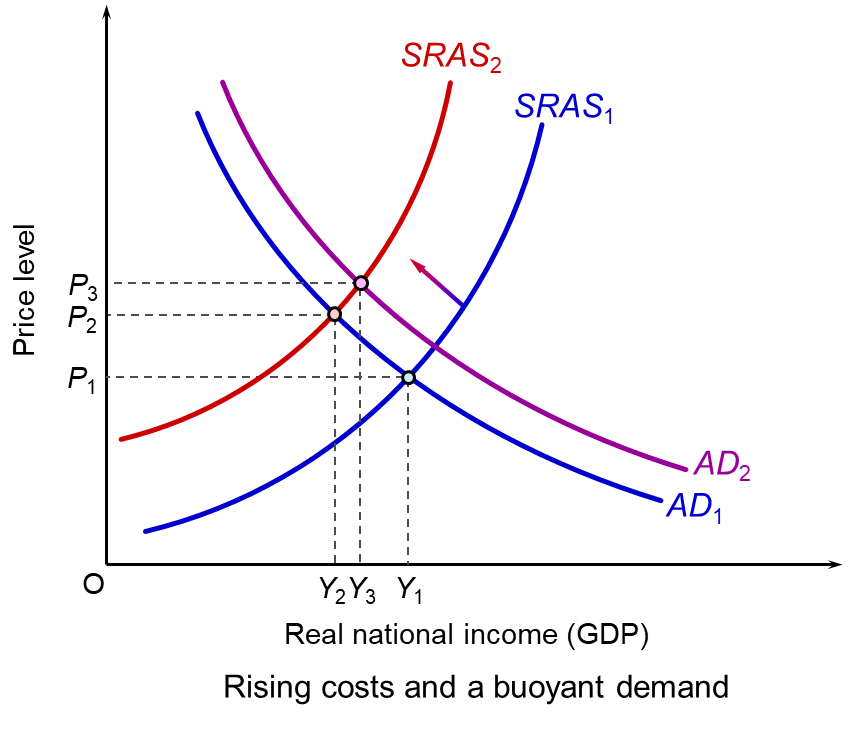 This effect of an adverse supply shock accompanied by relatively buoyant aggregate demand (at least initially) can be illustrated with an aggregate demand and supply diagram. The supply shock is illustrated by an upward shift to the left of the short-run aggregate supply curve (SRAS). (If the shock is a direct rise in prices, then it can be seen as a vertical upward shift. If it is a fall in the total amount supplied, then it can be seen as a horizontal leftward shift.) In the diagram, aggregate supply shifts from SRAS1 to SRAS2. The price level rises from P1 to P2. If costs go on rising or supply goes on falling then the curve will go on shifting upwards to the left.
This effect of an adverse supply shock accompanied by relatively buoyant aggregate demand (at least initially) can be illustrated with an aggregate demand and supply diagram. The supply shock is illustrated by an upward shift to the left of the short-run aggregate supply curve (SRAS). (If the shock is a direct rise in prices, then it can be seen as a vertical upward shift. If it is a fall in the total amount supplied, then it can be seen as a horizontal leftward shift.) In the diagram, aggregate supply shifts from SRAS1 to SRAS2. The price level rises from P1 to P2. If costs go on rising or supply goes on falling then the curve will go on shifting upwards to the left.
If the government responds by increasing benefits or reducing taxes, then, other things being
equal, aggregate demand will rise. In the diagram, the AD curve will shift to the right, e.g. from AD1 to AD2. Real GDP only falls to Y3 not Y2. However, the price level rises further: from P2 to P3.
Why has aggregate supply fallen?
There are several factors that have contributed to the fall in aggregate supply/rise in costs.
- Stretched supply chains, which had been adversely affected by Covid. Congestion at container ports has led to delays, with warehouses and shops being short of stock.
- Labour shortages, with many people not returning to the labour force after being laid off or furloughed, or only returning part time, leaving firms needing more people. The problem has been particularly acute in the UK, with many EU citizens having returned to the EU after Brexit and the UK having to rely increasingly on staff from outside the EU.
 The war in Ukraine. This has had a major impact on the supply of natural gas and oil. The war has also led to a fall in grain and other food supplies from Ukraine, as ports have been blockaded and there have been disruptions to planting and harvesting.
The war in Ukraine. This has had a major impact on the supply of natural gas and oil. The war has also led to a fall in grain and other food supplies from Ukraine, as ports have been blockaded and there have been disruptions to planting and harvesting.- Climate change is causing more severe weather events, such as droughts in Europe and western USA. The droughts of 2022 will compound the problem of food shortages and food price inflation.
- In the UK, Brexit costs, such as increased administrative burdens and difficulties in both exporting and importing, have dampened production and hence adversely impacted on aggregate supply.
- Increased industrial action. As the cost of living soars, unions are demanding pay increases to match the rise in the cost of living. Pay rises further increase firms’ costs – and the bigger the pay rises, the bigger the rise in costs.
The problem with a fall in aggregate supply is that it reduces real GDP. People as a whole are poorer. To use a common analogy, the national ‘pie’ has shrunk. Giving everyone a bigger knife and fork (i.e. a rise in nominal aggregate demand) will not make people better off. It just compounds the problem of rising prices, as the diagram shows.
In the short term, with GDP shrinking, there is a major issue of distribution. If the poor are to be given help so that they are not made even poorer, then other people will have been made worse off. In other words, their nominal incomes must rise more slowly than prices.
Monetary policy
 Central banks generally have a mandate of keeping inflation close to 2% over the medium term. Their levers are changes in interest rates, underpinned by changes in the money supply – in extreme times by quantitative easing (creating money by buying assets with newly created money) or quantitative tightening (withdrawing money from the economy by selling assets). Central banks, faced by soaring inflation, have been raising interest rates. The Fed has recently raised the Federal Funds rate by 0.75 percentage points (75 basis points) and the Bank of England and the European Central Bank by 0.5 percentage points (50 basis points).
Central banks generally have a mandate of keeping inflation close to 2% over the medium term. Their levers are changes in interest rates, underpinned by changes in the money supply – in extreme times by quantitative easing (creating money by buying assets with newly created money) or quantitative tightening (withdrawing money from the economy by selling assets). Central banks, faced by soaring inflation, have been raising interest rates. The Fed has recently raised the Federal Funds rate by 0.75 percentage points (75 basis points) and the Bank of England and the European Central Bank by 0.5 percentage points (50 basis points).
Raising interest rates reduces inflation by dampening aggregate demand. In the diagram, the AD curve shifts to the left (or shifts to the right less quickly). This will dampen inflation, as falling real demand will force firms to cut prices. But it will also force them to cut output and employment, thereby worsening the recession.
Central banks recognise this dilemma, but also recognise that if inflation is not brought rapidly under control, it could spiral upwards, with wages and prices chasing each other in a wage–price spiral, which only gets worse as inflationary expectations rise. The short-term pain of falling real income is a price worth paying for getting inflation under control.
Fiscal policy
In the short term, there is little that fiscal policy can do to raise real GDP. The focus, as it was during the pandemic, must therefore be in providing relief to those most in need.
In the UK, the energy price cap set by Ofgem will see likely energy bills for the typical household quadruple in just a year, from a little over £1000 per annum at January 2021 prices to over £4200 in predicted January 2023 prices. These higher prices partly reflect rising wholesale energy costs and partly the need for energy companies, in a process known as ‘backwardation’, to recoup hedging costs they have incurred so as not to be forced out of business.
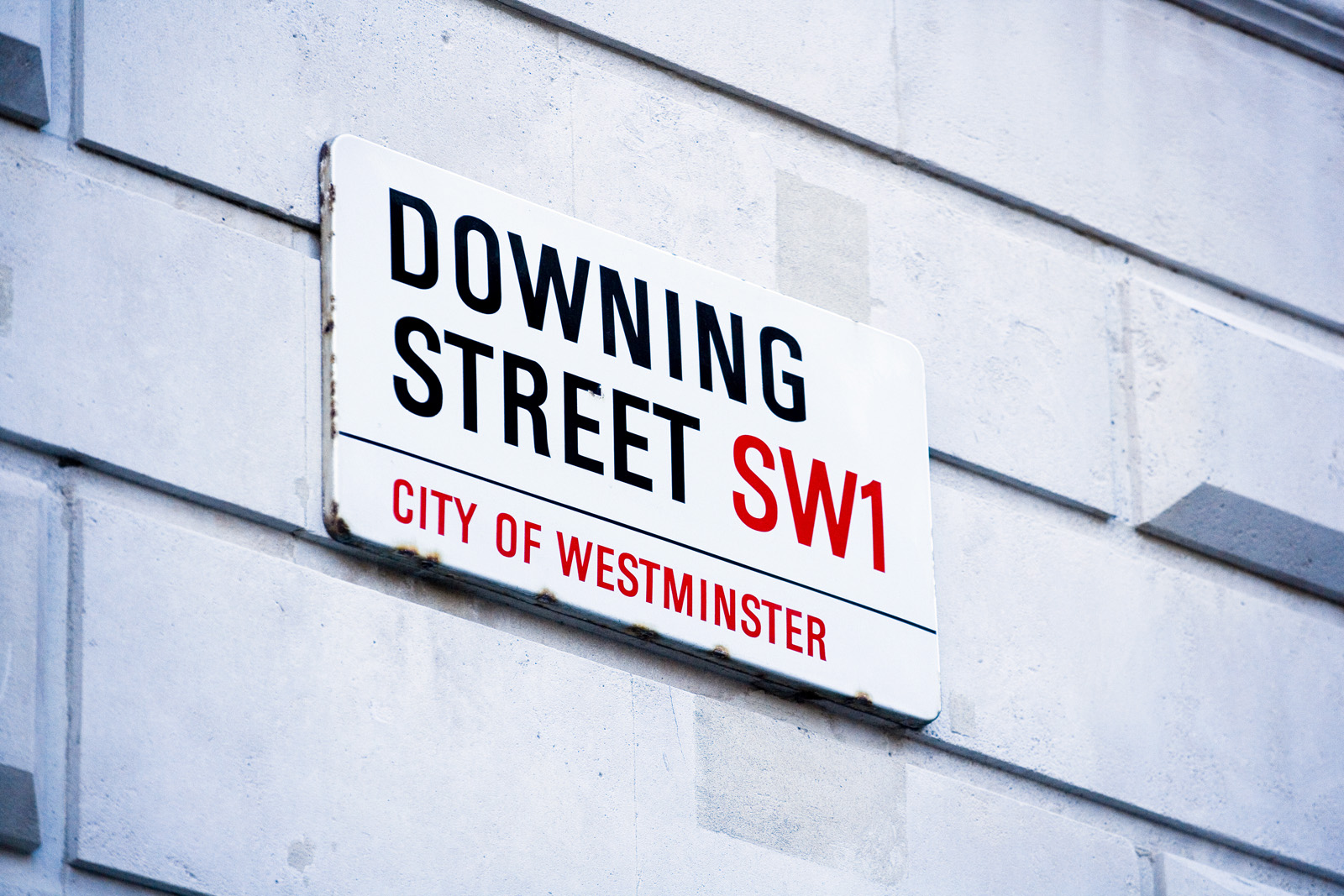 Relief for consumers can be in various forms. For example, the government could pay subsidies to energy suppliers to cap prices at a lower level, perhaps just for the poorest households. Or it could pay grants to help people with their bills. Again, these could be targeted to the poorest families, or paid on a sliding scale according to income. Or VAT on gas and electricity could be scrapped.
Relief for consumers can be in various forms. For example, the government could pay subsidies to energy suppliers to cap prices at a lower level, perhaps just for the poorest households. Or it could pay grants to help people with their bills. Again, these could be targeted to the poorest families, or paid on a sliding scale according to income. Or VAT on gas and electricity could be scrapped.
Generally the more people are entitled to help, the more expensive it is for the government and hence the less generous the help per family is likely to be.
Then there is the question of whether such measures should be accompanied by a rise in broadly-based tax, such as income tax, or whether the government should borrow more, which would be likely to push up interest rates and increase the cost of servicing government debt.
One topic of debate in the Conservative leadership contest is whether taxes should be cut to help people struggling with the cost of living. Whilst such a policy, if carefully targeted to investment, might increase aggregate supply over the longer term, in the short term it will increase aggregate demand and will add to inflationary pressures.
Targeting tax cuts to the poor is difficult. Cutting income tax rates has the opposite effect. The rich pay more income tax than the poor and will benefit most from a cut in rates. An alternative is to raise personal allowances. This will provide a bigger percentage help to income taxpayers on lower incomes, but provides no help at all for the poorest people who currently pay no income tax.
Conclusion
The supply shocks are making countries poorer. The focus in the short term, therefore, needs to be on income distribution and how to help those suffering the most.
To end on a note of optimism: the energy shocks are causing governments to invest in alternative sources, such as wind, solar and nuclear. When these come on line, it is expected that energy prices will fall.
As far as overall inflation is concerned, although the Bank of England is forecasting CPI inflation of 13.1% by Q4 2022, it is also forecasting that this will have fallen to 5.5% by Q4 2023 and to just 0.8% by Q3 2024. Fingers crossed.
 Households are expected to see further rises in the cost of living after the annual inflation rate climbed for a 13th month to its highest point in almost 30 years. This will put further pressure on already stretched household budgets. The increase reflects a bounceback in demand for goods and services after lockdowns, when prices fell sharply. It also reflects the impact of supply-chain disruptions as Covid-19 hit factory production and global trade.
Households are expected to see further rises in the cost of living after the annual inflation rate climbed for a 13th month to its highest point in almost 30 years. This will put further pressure on already stretched household budgets. The increase reflects a bounceback in demand for goods and services after lockdowns, when prices fell sharply. It also reflects the impact of supply-chain disruptions as Covid-19 hit factory production and global trade.
The biggest concern, however, is the impact it will have on those already hard-pressed families across the UK. According to official figures, prices are rising at similar rates for richer and poorer households. However, household income levels will determine personal experiences of inflation. Poorer households find it harder to cope than richer families as essentials, such as energy and food, form a larger proportion of their shopping basket than discretionary items. On average the lowest-income families spend twice as much proportionately on food and housing bills as the richest. So low-income households, if they are already spending mainly on essentials, will struggle to find where to cut back as prices rise.
Latest Inflation figures
Latest figures from the ONS show that the Consumer Prices Index (CPI) rose by 5.5% in the year to January 2022, with further increases in the rate expected over the next couple of months. In measuring inflation, the ONS takes a so-called ‘basket of goods, which is frequently updated to reflect changes in spending patterns. For example, in 2021, hand sanitiser and men’s loungewear bottoms were added, but sandwiches bought at work were removed.
Annual CPI inflation is announced each month, showing how much the weighted average of these prices has risen since the same date last year. The weighted average is expressed as an index, with the index set at 100 in the base year, which is currently 2015.
 Consumers would not normally notice price rises from month to month. However, prices are now rising so quickly that it is clear for everyone to see. What is more, average pay is not keeping up. There are workers in a few sectors, such as lorry drivers, who are in high demand, and therefore their wages are rising faster than prices. But the majority of workers won’t see such increases in pay. In the 12 months to January, prices rose by 5.5% on average, but regular pay, excluding bonuses, on average rose by only 4.7%, meaning that they fell by 0.8% in real terms.
Consumers would not normally notice price rises from month to month. However, prices are now rising so quickly that it is clear for everyone to see. What is more, average pay is not keeping up. There are workers in a few sectors, such as lorry drivers, who are in high demand, and therefore their wages are rising faster than prices. But the majority of workers won’t see such increases in pay. In the 12 months to January, prices rose by 5.5% on average, but regular pay, excluding bonuses, on average rose by only 4.7%, meaning that they fell by 0.8% in real terms.
The Bank of England has warned that CPI inflation could rise to 7% this year and some economists are forecasting that it could be almost 8% in April.
Why are costs rising?
From the weekly food shop, to filling up cars, to heating our homes, the cost of living is rising sharply around the world. Global inflation is at its highest since 2008. Some of the reasons why include:
- Rising energy and petrol prices
 Oil prices slumped at the start of the pandemic, but demand has rocketed back since, and oil prices have hit a seven-year high. The price of gas has also shot up, leaving people around the world with eye-watering central heating bills. Home energy bills in the UK are set to rise by 54% in April when Ofgem, the energy regulator, raises the price cap.
Oil prices slumped at the start of the pandemic, but demand has rocketed back since, and oil prices have hit a seven-year high. The price of gas has also shot up, leaving people around the world with eye-watering central heating bills. Home energy bills in the UK are set to rise by 54% in April when Ofgem, the energy regulator, raises the price cap.
- Goods shortages
During the pandemic, prices of everyday consumer goods increased. Consumers spent more on household goods and home improvements because they were stuck at home, couldn’t go out to eat or go on holiday. Manufacturers in places such as Asia have struggled to keep up with the demand. This has led to shortages of materials such as plastic, concrete and steel, driving up prices. Timber cost as much as 80% more than usual in 2021 in the UK.
- Shipping costs
Global shipping companies have been overwhelmed by surging demand after the pandemic and have responded by raising shipping charges. Retailers are now having to pay a lot more to get goods into stores. These prices are now being passed on to consumers. Air freight fees have also increased, having been made worse by a lorry driver shortage in Europe.
- Rising wages
During the pandemic many people changed jobs, or even quit the workforce – a problem exacerbated in the UK by Brexit as many European workers returned to their home countries. Firms are now having problems recruiting staff such as drivers, food processors and restaurant waiters. This has resulted in companies putting up wages to attract and retain staff. Those extra costs to employers are again being passed on to consumers.
- Extreme weather impact
Extreme weather in many parts of the world has contributed to inflation. Global oil supplies took a hit from hurricanes which damaged US oil infrastructure. Fierce storms in Texas also worsened the problems in meeting the demand for microchips. The cost of coffee has also jumped after Brazil had a poor harvest following its most severe drought in almost a century.
- Trade barriers
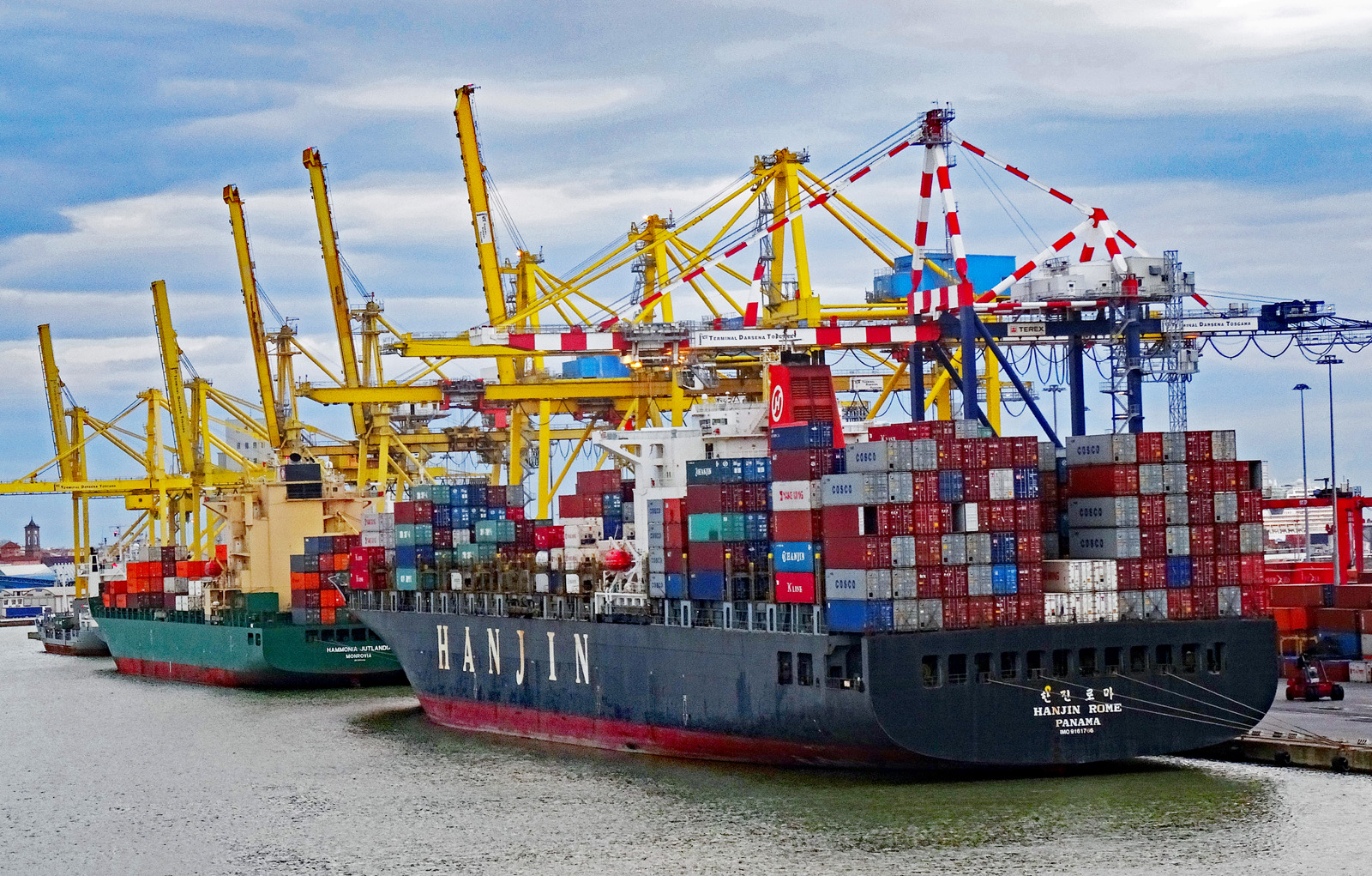 More costly imports are also contributing to higher prices. New post-Brexit trading rules are estimated to have reduced imports from the EU to the UK by about a quarter in the first half of 2021. In the USA, import tariffs on Chinese goods have almost entirely been passed on to US customers in the form of higher prices. Chinese telecoms giant Huawei said last year that sanctions imposed on the company by the USA in 2019 were affecting US suppliers and global customers.
More costly imports are also contributing to higher prices. New post-Brexit trading rules are estimated to have reduced imports from the EU to the UK by about a quarter in the first half of 2021. In the USA, import tariffs on Chinese goods have almost entirely been passed on to US customers in the form of higher prices. Chinese telecoms giant Huawei said last year that sanctions imposed on the company by the USA in 2019 were affecting US suppliers and global customers.
- The end of pandemic support
Governments are ending the support given to businesses during the pandemic. Public spending and borrowing increased across the world leading to tax rises. This has contributed to rises in the cost-of-living, while most people’s wages have lagged behind.
Main concerns for the UK inflation
With rapidly rising prices, the economic decisions people will have to make are much harder. The main concerns for UK households include increases in energy costs, food prices, rent and interest rates on borrowing. All of these concerns come at a time when the government prepares to increase national insurance contributions for workers in April. There has been some pressure from MPs to scrap the tax rise so as to ease the pressure on living costs. It can be argued that there are fairer ways to increase taxes than through national insurance. However, the plan is relatively progressive, and scrapping the rise could be a badly targeted way of helping the poorest households with their energy bills.
Energy Bills
Electricity and gas bills for a typical household are expected to increase on average by £693 a year in April, which, as we have seen, is a 54% increase. Around 18 million households on standard tariffs will see an average increase from £1277 to £1971 per year. And around 4.5 million prepayment customers will see an average increase of £708 – from £1309 to £2017. Energy bills won’t rise immediately for customers on fixed rates, but many are likely to see a significant increase when their deal ends.
Bills are going up because the energy price cap is being raised. The energy price cap is an example of a maximum price being imposed on the market; it is the maximum price suppliers in England, Wales and Scotland can charge households for their energy. Energy firms can increase bills by 54% when the new cap is introduced in April. The price cap is currently reviewed every 6 months and it is expected that that prices will rise again in October.
Energy price rises are likely to hit Britain’s poorest households the hardest as they spend proportionately more of their income on energy, a problem exacerbated by many living in poorly insulated homes. More people are thus expected to find themselves facing fuel poverty. This means that they spend a disproportionate amount of their income on energy and cannot afford to heat their homes adequately. According to the Resolution Foundation, the poorest will see their energy spend rise from 8.5% to 12% of their total household budget, three times the percentage for the richest.
The way fuel poverty is measured varies around the UK. In Scotland, a household is in fuel poverty if more than 10% of its income is spent on fuel and its remaining income isn’t enough to maintain an adequate standard of living. It is expected that the number of homes facing ‘fuel stress’ across the UK will treble to 6.3 million after April. It will, however, have the greatest impact on pensioners, people in local authority housing and low-income single-adult households who on average could be forced to spend over 50% of their income on gas and electricity. The Resolution Foundation thinktank has warned that UK households are facing a ‘cost of living catastrophe’.
Food
 Low-income households also spend a larger proportion than average on food and will therefore be relatively more affected by increases in food prices. Food and non-alcoholic drink prices were up by 4.2% in the year to December 2021. The Monetary Policy Committee has stated that food price inflation is expected to increase in coming months, given higher input costs. It has been estimated by the thinktank, Food Foundation, that 4.7m Britons, equivalent to 8.8% of the population, are struggling to feed themselves and are regularly going a day without eating.
Low-income households also spend a larger proportion than average on food and will therefore be relatively more affected by increases in food prices. Food and non-alcoholic drink prices were up by 4.2% in the year to December 2021. The Monetary Policy Committee has stated that food price inflation is expected to increase in coming months, given higher input costs. It has been estimated by the thinktank, Food Foundation, that 4.7m Britons, equivalent to 8.8% of the population, are struggling to feed themselves and are regularly going a day without eating.
Supermarkets have also raised their concerns about future increases. Tesco’s chairman John Allan has predicted that the worst is yet to come, pointing to 5% as a likely figure for food price inflation by the spring. He cited high energy prices, both for Tesco and its suppliers, as a key factor behind the expected rise.
It has been observed that the Smart Price, Basics and Value range products offered by supermarkets as lower-cost alternatives are stealthily being extinguished from the shelves. This is leaving shoppers with no choice but to ‘level up’ to the supermarkets’ own better-quality branded goods – usually in smaller quantities at larger prices. The managing director of Iceland, Richard Walker, has stated that his stores are not losing customers to other competitors or to better offers, but to food banks and to hunger. This is a highly concerning statement given that 2.5m citizens were forced by an array of desperate circumstances to use food banks over the past year.
Rent
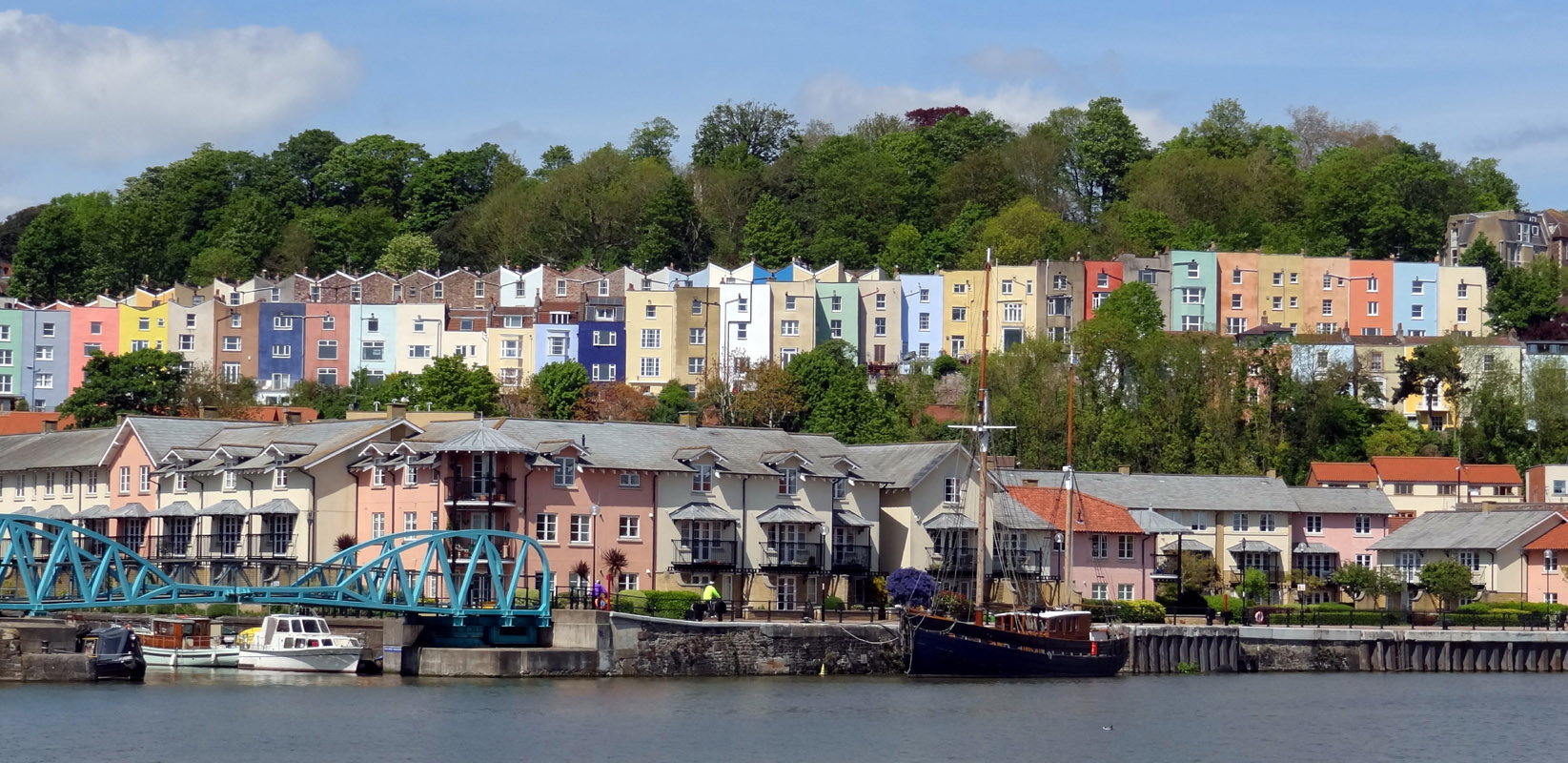 Private rents are also rising at their fastest rate in five years, intensifying the increase in the cost of living for millions of households. Data from the ONS reveal that the average cost of renting in the UK rose by 2% in 2021. This was the largest annual increase since 2017. The East Midlands had the biggest increase in average rental prices, with tenants paying 3.6% more than a year earlier. However, due to falling demand for city flats during lockdown, as people favoured working from home, London had the smallest increase at 0.1%. Nevertheless, as Covid restrictions are removed, renters, including office workers and students, are now returning back to cities. This is now pushing up rental prices with demand outpacing supply.
Private rents are also rising at their fastest rate in five years, intensifying the increase in the cost of living for millions of households. Data from the ONS reveal that the average cost of renting in the UK rose by 2% in 2021. This was the largest annual increase since 2017. The East Midlands had the biggest increase in average rental prices, with tenants paying 3.6% more than a year earlier. However, due to falling demand for city flats during lockdown, as people favoured working from home, London had the smallest increase at 0.1%. Nevertheless, as Covid restrictions are removed, renters, including office workers and students, are now returning back to cities. This is now pushing up rental prices with demand outpacing supply.
The property website Zoopla found newly advertised rental prices were rising much faster across the UK. It said the average rent jumped 8.3% in the final three months of 2021 to £969 a month. This increase in rental prices, combined with the general rise in prices will place additional pressure on the government to increase support for vulnerable families. The housing charity, Shelter, has reported an increase in people who are struggling to pay their rent and even pay their electricity. With Covid-era protections having ended, if people struggle to pay, they are faced with eviction or even homelessness. There are calls for the government to support such people by reversing welfare cuts.
Insurer, Legal & General, has announced an additional investment over the next 5 years of £2.5bn on its ‘build to rent’ schemes. The aim is to provide more than 7000 purpose-built rental homes in UK towns and cities. L&G claims that the additional homes are part of the solution to the rental problem, with rent increases being capped at 5% for five years. However, sceptics claim the company is simply trying to cash in on the booming market and there are calls for further government action. The Joseph Rowntree Foundation claim that renters will struggle as rents in some areas have risen as much as 8%. Despite this, housing benefit has been frozen for two years and therefore there are calls for government to urgently relink housing benefit to the real cost of renting.
Articles
- UK inflation forecast to hit 8% in April amid cost of living crisis
The Guardian, Phillip Inman (16/2/22)
- Inflation: Seven reasons the cost of living is going up around the world
BBC News, Beth Timmins and Daniel Thomas (20/1/22)
- Why are gas bills so high and what’s the energy price cap?
BBC News (4/2/22)
- What is the UK’s inflation rate and why is the cost of living going up?
BBC News (16/2/22)
- In numbers: what is fuelling Britain’s cost of living crisis?
The Guardian, Richard Partington and Ashley Kirk (3/2/22)
- Rising cost of living in the UK
House of Commons Library, Research Briefing, Brigid Francis-Devine, Daniel Harari, Matthew Keep and Paul Bolton (8/2/22)
- Rising cost of living leaves 4.7mn Britons struggling to feed themselves
Financial Times, Bethan Staton (6/2/22)
- UK cost of living crisis merits a full response
Financial Times, The editorial board (3/2/22)
- UK cost of living crisis intensifies
Financial Times, Darren Dodd (19/1/22)
- The cost of living crisis – who is hit by recent price increases?
IFS, Peter Levell and Heidi Karjalainen (17/11/21)
- The cost of living crunch
IFS, Robert Joyce, Heidi Karjalainen, Peter Levell and Tom Waters (12/1/22)
- Fastest rent rise in five years adds to concerns over UK cost of living crisis
The Guardian, Georgina Quach (16/2/22)
Questions
- What other measures of inflation are used beside CPI inflation? How do they differ?
- If all consumers are facing approximately the same price increases for any given good or service, why are poor people being disproportionately hit by rising prices?
- For what reasons might the rate of inflation (a) rise further; (b) begin to fall?
- Examine a developed country other than the UK and find out how inflation is affecting its population. Is its experience similar to that in the UK? Does it differ in any way?
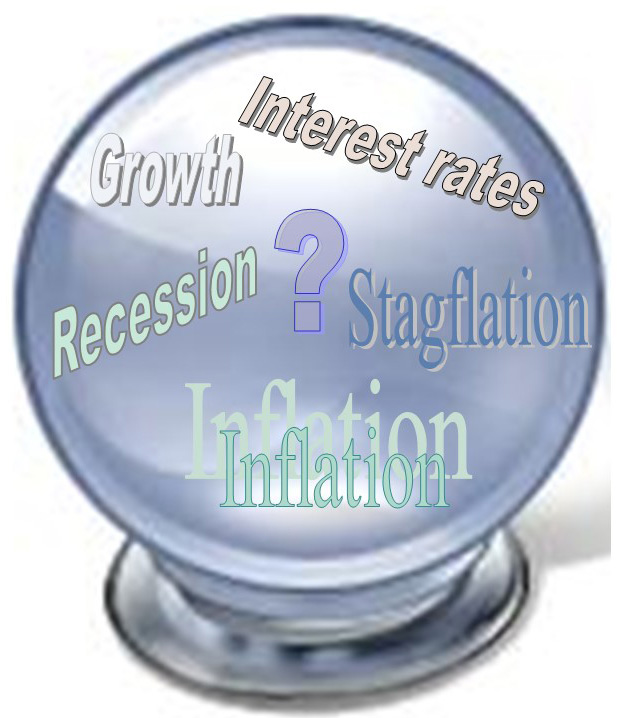 Inflation across the world has been rising. This has been caused by a rise in aggregate demand as the global economy has ‘bounced back’ from the pandemic, while supply-chain disruptions and tight labour markets constrain the ability of aggregate supply to respond to the rise in demand.
Inflation across the world has been rising. This has been caused by a rise in aggregate demand as the global economy has ‘bounced back’ from the pandemic, while supply-chain disruptions and tight labour markets constrain the ability of aggregate supply to respond to the rise in demand.
But what of the coming months? Will supply become more able to respond to demand as supply-chain issues ease, allowing further economic growth and an easing of inflationary pressures?
Or will higher inflation and higher taxes dampen real demand and cause growth, or even output, to fall? Are we about to enter an era of ‘stagflation’, where economies experience rising inflation and economic stagnation? And will stagnation be made worse by central banks which raise interest rates to dampen the inflation but, in the process, dampen spending.
Despite the worries of central banks, with inflation being higher than forecast a few months ago, forecasts (e.g. the OECD’s) are still for inflation to peak fairly soon and then to fall back to around 2 to 3 per cent by the beginning of 2023 – close to central bank target rates.
 In the UK, annual CPI inflation reached 5.4% in December 2021. The UK Treasury’s January 2022 new monthly forecasts for the UK economy by 15 independent institutions give an average forecast of 4.0% for CPI inflation for 2022. In the USA, annual consumer price inflation reached 7 per cent in December 2021, but is forecast to fall to just over the target rate of 2% by the end of 2022.
In the UK, annual CPI inflation reached 5.4% in December 2021. The UK Treasury’s January 2022 new monthly forecasts for the UK economy by 15 independent institutions give an average forecast of 4.0% for CPI inflation for 2022. In the USA, annual consumer price inflation reached 7 per cent in December 2021, but is forecast to fall to just over the target rate of 2% by the end of 2022.
If central banks respond to the current high inflation by raising interest rates more than very slightly and by stopping quantitative easing (QE), or even engaging in quantitative tightening (selling assets purchased under previous QE schemes), there is a severe risk of a sharp slowdown in economic activity. Household budgets are already being squeezed by the higher prices, especially energy and food prices. And people will face higher taxes as governments seek to reduce their debts, which soared with the Covid support packages during the pandemic.
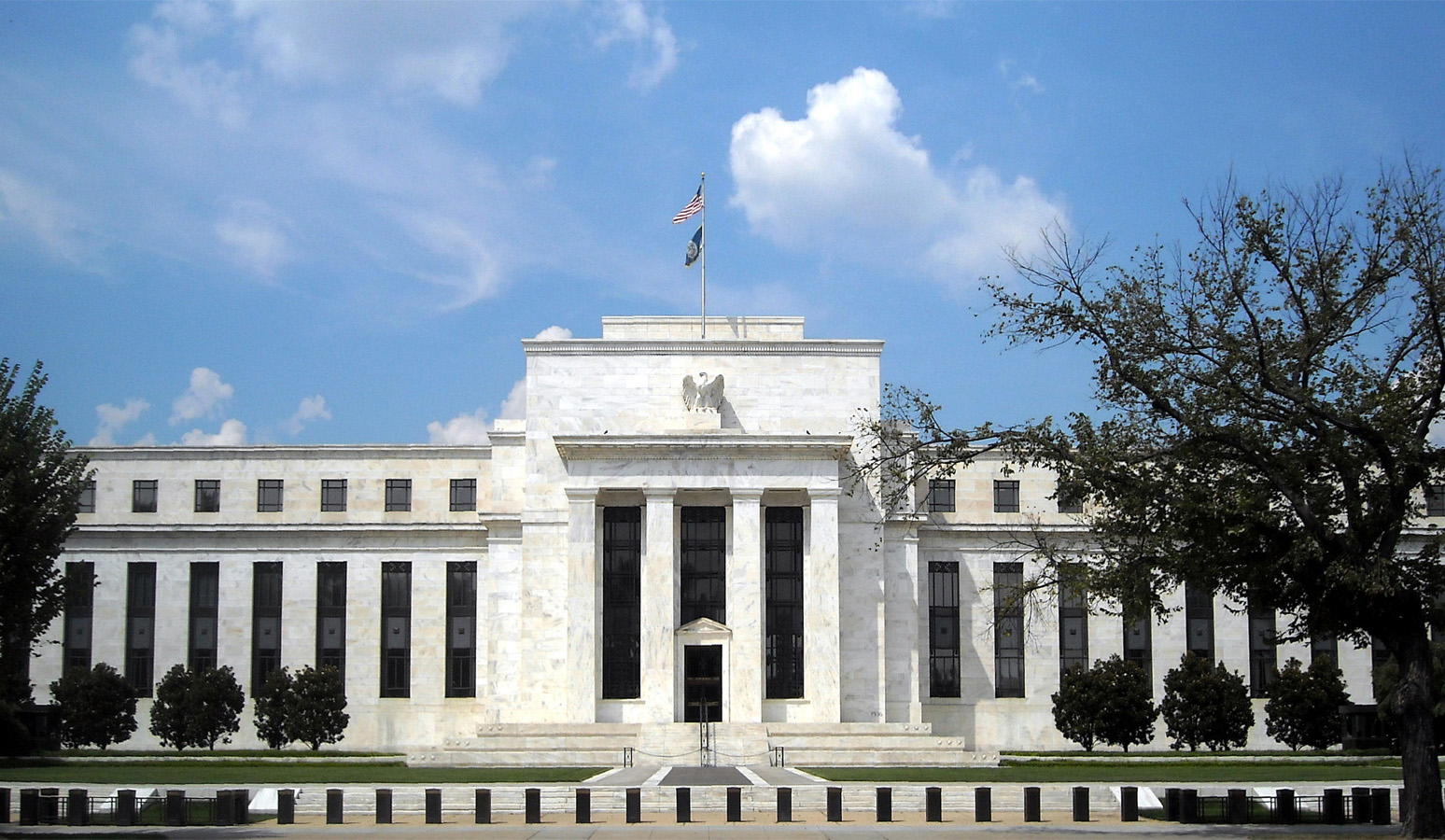 The Fed has signalled that it will end its bond buying (QE) programme in March 2022 and may well raise interest rates at the same time. Quantitative tightening may then follow. But although GDP growth is still strong in the USA, Fed policy and stretched household budgets could well see spending slow and growth fall. Stagflation is less likely in the USA than in the UK and many other countries, but there is still the danger of over-reaction by the Fed given the predicted fall in inflation.
The Fed has signalled that it will end its bond buying (QE) programme in March 2022 and may well raise interest rates at the same time. Quantitative tightening may then follow. But although GDP growth is still strong in the USA, Fed policy and stretched household budgets could well see spending slow and growth fall. Stagflation is less likely in the USA than in the UK and many other countries, but there is still the danger of over-reaction by the Fed given the predicted fall in inflation.
But there are reasons to be confident that stagflation can be avoided. Supply-chain bottlenecks are likely to ease and are already showing signs of doing so, with manufacturing production recovering and hold-ups at docks easing. The danger may increasingly become one of demand being excessively dampened rather than supply being constrained. Under these circumstances, inflation could rapidly fall, as is being forecast.
Nevertheless, as Covid restrictions ease, the hospitality and leisure sector is likely to see a resurgence in demand, despite stagnant or falling real disposable incomes, and here there are supply constraints in the form of staffing shortages. This could well lead to higher wages and prices in the sector, but probably not enough to prevent the fall in inflation.
Articles
- Inflation will probably melt away in 2022 – central banks will do far more harm trying to tackle it
The Conversation, Brigitte Granville (14/1/22)
- Stagflation and why it matters
The Week, Chas Newkey-Burden (1/10/21)
- Surging inflation could dwarf other issues in the political landscape as households feel the strain
Sky News, Ed Conway (19/1/22)
- Inflation is back, and there’s plenty more in the pipeline
The Guardian, Larry Elliott (19/1/22)
- UK inflation jumps to highest level in 30 years
Financial Times, Chris Giles (19/1/22)
- UK workers’ pay rises fall behind inflation amid cost-of-living crisis
The Guardian, Richard Partington (18/1/22)
- UK faces a pay squeeze – and higher interest rates look likely
The Guardian, Phillip Inman (18/1/22)
- Inflation: why it’s temporary and raising interest rates will do more harm than good
The Conversation, Muhammad Ali Nasir (22/11/21)
- Inflation: why it is the biggest test yet for central bank independence
The Conversation, Anton Muscatelli (14/12/21)
- Three more interest rate rises loom after Bank’s borrowing cost shock
The Telegraph, Russell Lynch and Tim Wallace (16/12/21)
- US Stagflation: The Global Risk Of 2022 – OpEd
Eurasia Review, Dan Steinbock (17/1/22)
- If prices keep rising, a nightmare scenario for the US economy is a real possibility
CNN, Paul R La Monica (12/1/22)
- Will inflation in the UK keep rising?
Bank of England (10/12/21)
Data
Questions
- Under what circumstances would stagflation be (a) more likely; (b) less likely?
- Find out the causes of stagflation in the early/mid-1970s.
- Argue the case for and against the Fed raising interest rates and ending its asset buying programme.
- Why are labour shortages likely to be higher in the UK than in many other countries?
- Research what is likely to happen to fuel prices over the next two years. How is this likely to impact on inflation and economic growth?
- Is the rise in prices likely to increase or decrease real wage inequality? Explain.
- Distinguish between cost-push and demand-pull inflation. Which of the two is more likely to result in stagflation?
- Why are inflationary expectations a major determinant of actual inflation? What influences inflationary expectations?
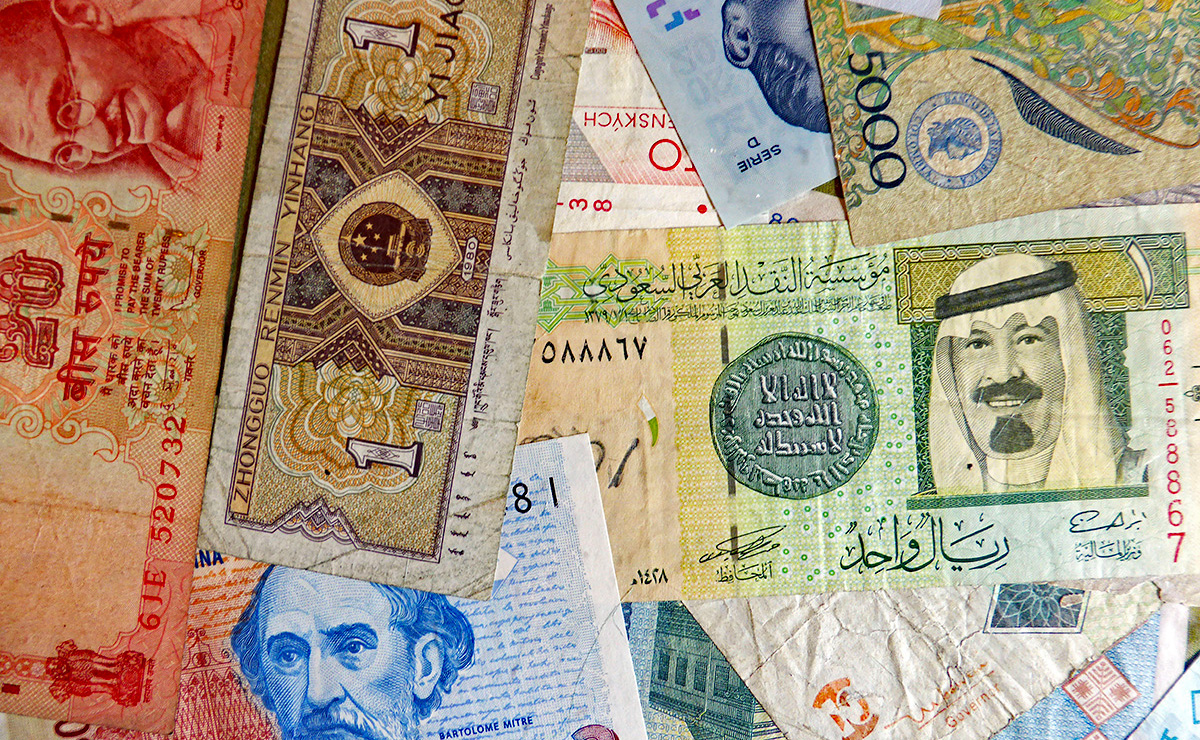 Inflation has been rising around the world as a combination of a recovery in demand and supply-chain issues have resulted in aggregate demand exceeding aggregate supply. Annual consumer price inflation at the beginning of 2022 is around 2.5% in China, 3.5% in Sweden, 5% in the eurozone, Canada and India, 6% in the UK and South Africa, 7% in the USA and 7.5% in Mexico. In each case it is forecast to go a little higher before falling back again.
Inflation has been rising around the world as a combination of a recovery in demand and supply-chain issues have resulted in aggregate demand exceeding aggregate supply. Annual consumer price inflation at the beginning of 2022 is around 2.5% in China, 3.5% in Sweden, 5% in the eurozone, Canada and India, 6% in the UK and South Africa, 7% in the USA and 7.5% in Mexico. In each case it is forecast to go a little higher before falling back again.
Inflation in Turkey
In Turkey inflation is much higher. The official annual rate of consumer price inflation in December 2021 was 36.1%, sharply up from 21.3% in November. But according to Turkey’s influential ENAGrup the December rate was much higher still at 82.8%. Official producer price inflation was 79.9% and this will feed through into official consumer price inflation in the coming weeks.
The rise in inflation has hit the poor particularly badly. According to the official statistics, in the year to December 2021, domestic energy prices increased by 34.2%, food by 44.7% and transport by 53.7%. In response, the government has raised the minimum wage by nearly 50% for 2022.
Causes of high and rising inflation
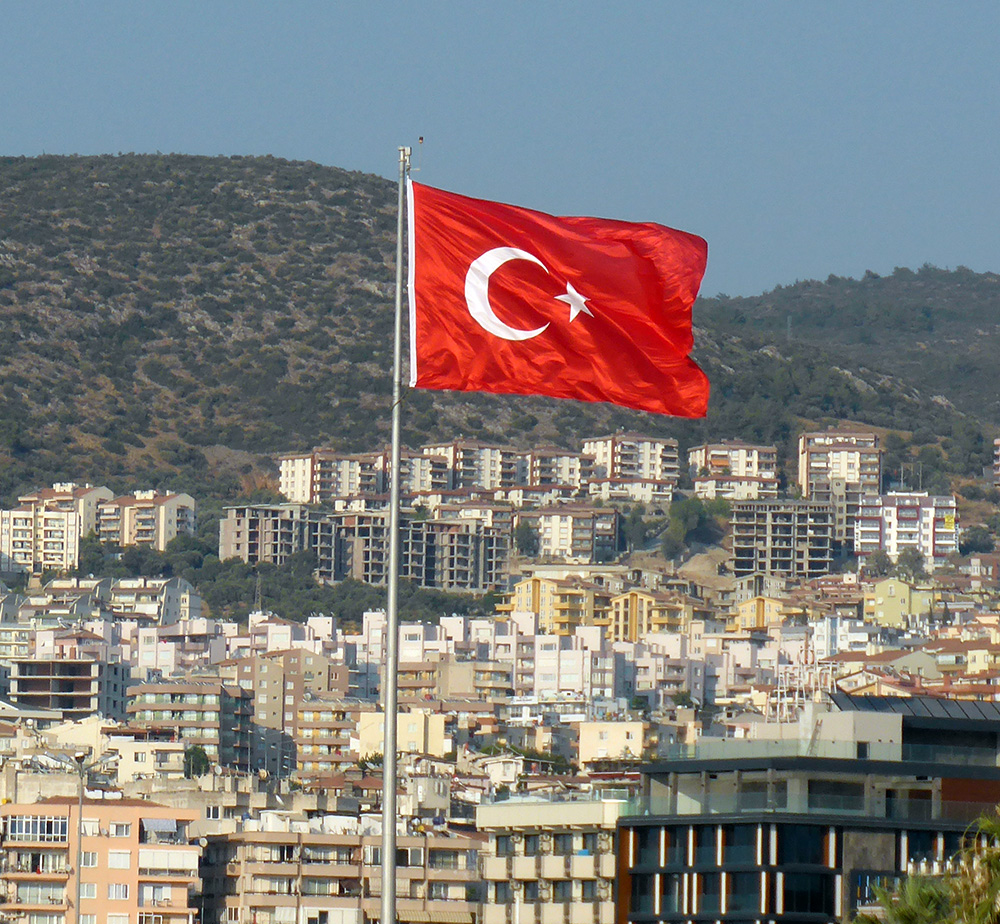 Why is Turkey’s inflation so much higher than in most developed and emerging economies and why has it risen so rapidly? The answer is that aggregate demand has been excessively boosted – well ahead of the ability of supply to respond. This has driven inflation expectations.
Why is Turkey’s inflation so much higher than in most developed and emerging economies and why has it risen so rapidly? The answer is that aggregate demand has been excessively boosted – well ahead of the ability of supply to respond. This has driven inflation expectations.
Turkey’s leader, President Erdoğan, in recent years has been seeking to stimulate economic growth through a mixture of supply-side, fiscal and monetary policies. He has hoped that the prospect of high growth would encourage both domestic and inward investment and that this would indeed drive the high growth he seeks. To encourage investment he has sought to reduce the reliance on imports through various measures, such as public procurement favouring domestic firms, tax reliefs for business and keeping interest rates down. He has claimed that the policy is focused on investment, production, employment and exports, instead of the ‘vicious circle of high interest rates and low exchange rates’.
With the pandemic, fiscal policy was largely focused on health, social security and employment measures. Such support was aided by a relatively healthy public finances. General government debt was 32% of GDP in 2020. This compares with 74% for the EU and 102% for the G7. Nevertheless, the worsening budget deficit has made future large-scale expenditure on public infrastructure, tax cuts for private business and other supply-side measures more difficult. Support for growth has thus fallen increasingly to monetary policy.
The Turkish central bank is not independent, with the President firing senior officials with whom he disagrees over monetary policy. The same applies to the Finance Ministry, with independently-minded ministers losing their jobs. Monetary and exchange rate policy have thus become the policy of the President. And it is here that a major part of the current problem of rising inflation lies.
Monetary and exchange rate policy
Despite rising inflation, the central bank has reduced interest rates. At its monthly meeting in September 2021, the Turkish central bank reduced its key rate from 19% to 18% and then to 16% in October, to 15% in November and 14% in December. These unprecedented rate cuts saw a large increase in the money supply. M1 rose by 11.7% in November alone; the annual growth rate was 59.5%. Broad money (M2 and M3) similarly rose. M3 grew by an annual rate of 51% in November 2021. The cut in interest rates and rise in money supply led to a rise in nominal expenditure which, in turn, led to higher prices.
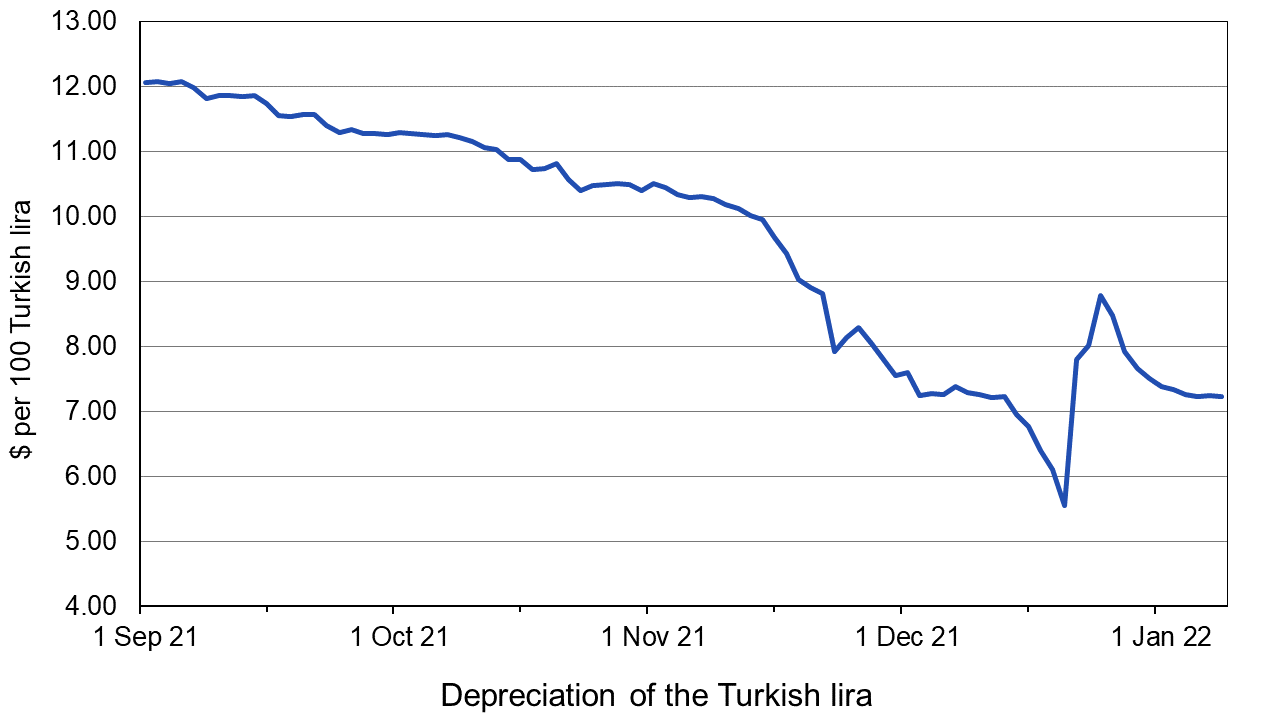
The cut in interest rates and rise in nominal aggregate demand led to a large depreciation in the exchange rate. On 1 September 2021, 100 Turkish lira exchanged for $12.05. By 11 January 2022 the rate had fallen to $7.22 – a 40.1% depreciation. This depreciation, in turn, further stoked inflation as the lower exchange rate pushed up the price of imported goods. (Click here for a PowerPoint of the chart.)
Attempts were made to stem this fall in the lira on 20 December, by which point 100 lira were trading for just $5.50 (see chart) and speculation against the lira was gathering momentum. President Erdoğan announced a scheme to protect lira deposits against currency volatility, guaranteeing lira deposits in hard currency terms. The mechanism adopted was a rise in the interest rate on lira deposits with a maturity of 3 to 12 months, thereby encouraging people to lock in deposits for the medium term and not, therefore, to use them to speculate against the lira by buying other currencies. Other interest rates would be unaffected. At the same time the central bank used foreign currency reserves to engage in large-scale purchases of the lira on the foreign exchange market.
The lira rallied. By 23 December, 100 lira were trading for $8.79. But then selling of the lira began again and, as stated above, by early January 100 lira had fallen to $7.22. The underlying problem of excess demand and high inflationary expectations had not been solved.
It remains to be seen whether the President will change his mind and decide that the central bank needs to raise interest rates to reduce inflation and restore confidence.
Videos
Articles
- Turkish Inflation Hits Highest Since 2002 Amid Lira Woes
Bloomberg, Baris Balci and Cagan Koc (3/1/22)
- Turkey’s annual inflation rate is over 82 percent, finds research group
Bianet (3/1/22)
- How Turkey can overcome its economic challenges
Arab News, Zaid M Belbagi (2/1/22)
- Turkey cuts interest rates despite spiralling inflation
BBC News, Victoria Craig (16/12/21)
- Turkey inflation surges 36% amid lira crisis, highest since 2002
CNBC (3/1/22)
- Turkey mulls new financial instruments to shield against inflation
Daily Sabah (3/1/22)
- Turkey raises minimum wage as lira crash, inflation sow hardship
Aljazeera, Umar Farooq (16/12/21)
- What to make of Turkey’s latest unorthodox currency move
Financial Times, Mohamed El-Erian (21/12/21)
- Erdoğan gambles on economy amid protests and rocketing inflation
The Guardian, Phillip Inman (24/11/21)
- Explained: How did Turkey’s economy go so wrong?
The Indian Express, Patricia Cohen (15/12/21)
Data
Questions
- Until the pandemic, the Turkish economy could be seen as a success story. Why?
- What supply-side policies did Turkey pursue?
- Use either an aggregate demand and supply diagram or a dynamic aggregate demand and supply (DAD/DAS) diagram to explain what has happened to inflation in Turkey in the past few months.
- Explain the thinking behind the successive cuts in interest rates since September 2021.
- Why did the measures introduced on 20 December 2021 only temporarily halt the depreciation of the lira?
- Choose a country with a higher rate of inflation than Turkey (see second data link above). Find out the causes of its high rate. Are they similar to those in Turkey?
 During the pandemic, millions of people’s wages in the UK were paid by the government to prevent the closure of businesses and a surge in unemployment. The furlough scheme officially came to an end in September 2021. However, with the spread of the Omicron variant and the fear of further restrictions being put in place, there has been a call by many to re-introduce the furlough scheme.
During the pandemic, millions of people’s wages in the UK were paid by the government to prevent the closure of businesses and a surge in unemployment. The furlough scheme officially came to an end in September 2021. However, with the spread of the Omicron variant and the fear of further restrictions being put in place, there has been a call by many to re-introduce the furlough scheme.
The furlough scheme
The furlough scheme began when the government brought in, what was officially called the Coronavirus Job Retention Scheme (CJRS) in early 2020. This was when the pandemic first forced businesses across the country to close. The scheme worked by paying part of employees’ wages, preventing the need for businesses to make their staff redundant, therefore avoiding a rapid rise in unemployment along with the associated costs. It also avoided the financial and emotional costs of firing and then rehiring workers post pandemic. Under the scheme, furloughed workers received 80% of their wages, up to £2500 a month, if they couldn’t work because of the impact of coronavirus. Employees were able to maintain the security of employment and the payments helped furloughed workers pay their bills.
 The scheme saw billions of pounds spent paying the wages of employees whose firms were forced to close temporarily. It could be argued that the expense of the scheme was a huge disadvantage. However, the alternative would have been for the government to pay unemployment-related benefits. Despite the furlough scheme being deemed necessary, it was not without its drawbacks for the structure of businesses. Rather than businesses adapting to changes in the economy and consumer demands, they could decide to claim the money and avoid the need to restructure. There was also concern about the length of the furlough scheme and the ability of businesses to bounce back post-pandemic.
The scheme saw billions of pounds spent paying the wages of employees whose firms were forced to close temporarily. It could be argued that the expense of the scheme was a huge disadvantage. However, the alternative would have been for the government to pay unemployment-related benefits. Despite the furlough scheme being deemed necessary, it was not without its drawbacks for the structure of businesses. Rather than businesses adapting to changes in the economy and consumer demands, they could decide to claim the money and avoid the need to restructure. There was also concern about the length of the furlough scheme and the ability of businesses to bounce back post-pandemic.
Since the start of the scheme, the specifics of what was paid and who received it changed over time, especially once the economy started opening again. Initial steps were made to allow part-time return to work and the scheme started to wind down over the summer of 2021, with the government covering less of the wages and businesses covering more. From July, employers had to provide 10% of the wages of their furloughed staff, with the government paying the rest. This then increased to 20% in August with the CJRS coming to a complete end on 30 September 2021. At this point, there were around 1.6 million employees still receiving payment from the scheme.
Impact on Employment
With the end to the furlough scheme in September 2021, there were concerns that this would lead to a large number of redundancies. However, data indicate that has not happened and there is a record number of job vacancies. Official figures show that UK employment rose in October, confirming the strength of the labour market. The Office for National Statistics stated that the employment rate rose to 75.5% in the three months to October, up 0.2 percentage points on the previous quarter. This is believed to be driven by a rise in part-time work, which had dropped sharply during the pandemic. However, it is important to note that the strength in these numbers was prior to the emergence of the Omicron variant.
Omicron
 In November, the government had ruled out once again bankrolling people’s wages at enormous expense. However, the Chancellor is now under pressure to respond to the latest announcements around the ever-changing landscape of the pandemic. The fast-spreading mutation of the Covid-19 virus, Omicron, is posing a fresh threat to the economy.
In November, the government had ruled out once again bankrolling people’s wages at enormous expense. However, the Chancellor is now under pressure to respond to the latest announcements around the ever-changing landscape of the pandemic. The fast-spreading mutation of the Covid-19 virus, Omicron, is posing a fresh threat to the economy.
On the 8 December, the Prime Minister announced new ‘Plan B’ Covid rules for England. As part of these new rules to limit the spread of Omicron, people are being asked to work from home again if possible and face masks are compulsory in most public places. Covid passes or a negative Covid test result are also needed to get into nightclubs and large venues.
Scotland and Wales have brought in further restrictions. Scotland’s First Minister, Nicola Sturgeon, has asked people to limit socialising to three households at a time in the run-up to Christmas. Shops and hospitality venues in Scotland must bring back physical distancing and screens. In Wales, nightclubs will close after 26 December and social distancing will be reintroduced in shops.
 Although the hospitality industry and retail sector remain open, they are facing a slump in trade thanks to the new restrictions and worries among the general public. With the work-from-home guidance and advice from health officials that people should limit their social interactions, pubs and restaurants have seen widespread cancellations in the run-up to Christmas. Trade is suffering and these mass cancellations come at a time when these sectors were hoping for bumper trade after a dismal last couple of years.
Although the hospitality industry and retail sector remain open, they are facing a slump in trade thanks to the new restrictions and worries among the general public. With the work-from-home guidance and advice from health officials that people should limit their social interactions, pubs and restaurants have seen widespread cancellations in the run-up to Christmas. Trade is suffering and these mass cancellations come at a time when these sectors were hoping for bumper trade after a dismal last couple of years.
In light of these concerns, ministers are now being urged to guarantee support in case businesses have to shut. Despite the indication that it would be highly unlikely that the UK would experience a full return to the restrictions seen at previous stages of the crisis, the International Monetary Fund has stated that the UK government should be drawing up contingency plans. The IMF has called for a mini-furlough scheme in the event that the Omicron variant forces the government to close parts of the economy. The idea is that the mini-furlough scheme would see a limited version of the multi-billion-pound job subsidy scheme being rolled out if firms are forced to close.
There are strong calls for there to be targeted support, which this mini-furlough scheme could offer. The Resolution Foundation argued in mid-December that a furlough scheme tied solely to the hospitality industry would help prevent job loses in an industry that is currently suffering once again. It calculated that the cost of a hospitality-only furlough scheme would be £1.4 billion a month if it were pitched at the original level of 80% of wage support. If a January to March sector-specific scheme were to be introduced it is estimated to cost around £5 billion, a small cost in comparison to £46 billion spent on furlough so far.
Inflation
Any reintroduction of a furlough scheme would be a jolt for the government. This would mean a return to the 2020-style arguments around protecting livelihoods and businesses, a contrast to the recent messaging from the Treasury of restoring public finances. There is also concern about how this will all impact on current growth predictions and inflation concerns. The IMF expects the growth of the UK economy to be 6.8% in 2021 and 5% in 2022. However, the drawback from this is that the recovery would also be accompanied by rising inflation. It has been suggested, therefore, that interest rate increases from the Bank of England would be needed to keep inflation under control, while at the same time being not so great as to kill off growth.
It was widely expected that the Bank of England would again put off a rate hike in order to wait to see the economic impact of Plan B restrictions. However, on Thursday 16 December, interest rates were raised for the first time in more than three years. Despite the fears that Omicron could slow the economy by causing people to spend less, Bank Rate was raised from 0.1% to 0.25% . This came in the wake of data showing prices climbing at the fastest pace for 10 years.
Next Steps?
Government finances would take another huge hit if the furlough scheme were revived. But a version of such a scheme is likely to be necessary to avert an unemployment crisis and the attendant costs.
However, in resisting further measures, the government has argued that it has already acted early to help control the virus’s spread by rapidly rolling out booster jabs, while avoiding unduly damaging economic and social restrictions.
The government also argues that some of the measures from the total £400 billion Covid support package since the start of the pandemic will continue to help businesses into Spring 2022. Such measures include government-backed loans for small- and medium-sized businesses until June 2022, a reduction in VAT from 20% to 12.5% until March 2022 and business rates relief for eligible retail, hospitality, and leisure businesses until March 2022. Talks are ongoing with hospitality and and other business organisations directly affected by Covid restrictions.
The British Chambers of Commerce has argued that current measures are not enough and has called for VAT on hospitality and tourism to be cut back to its emergency rate of 5% and for the 100% business rates relief for retailers to return. The CBI has also called for any unspent local authority grants to be spent now to help affected firms and that further help, including business rates relief, should be on the table if restrictions continue after the government’s 5 January review date. The IMF said that with strong policy support, the economy had proved resilient, but it stressed that a return of some of the measures that prevented mass unemployment and large-scale business failures might soon be needed.
Conclusion
Infections caused by the new Omicron variant are rising rapidly, doubling every two to three days. It is expected to become the dominant variant in the UK soon with health officials warning it may be the most significant threat since the start of the pandemic. However, it is not yet known what the full extent of the impact of this new variant on the NHS will be, leaving the severity of future restrictions uncertain.
But what is evident is that the course of the pandemic has changed and there is a growing case for the government to start planning for new support packages. Although a reintroduction of the furlough scheme was hoped not to be needed on the path out of the pandemic, a short detour may be required in the form of a mini-furlough scheme. The size and reach of any support put in place will depend upon any further restrictions on economic activity.
Articles
Questions
- Should the level of support for business return to the levels in place earlier in 2021?
- What measures could a government put in place to curtail the spread of the Omicron variant that have only a minimal impact on business and employment?
- Compare the UK measures to curtail the spread of the virus with those used in some other European countries.
- What are the arguments for and against (a) re-introducing the furlough scheme as it was earlier in 2021; (b) introducing a version restricted to the hospitality sector?

 This effect of an adverse supply shock accompanied by relatively buoyant aggregate demand (at least initially) can be illustrated with an aggregate demand and supply diagram. The supply shock is illustrated by an upward shift to the left of the short-run aggregate supply curve (SRAS). (If the shock is a direct rise in prices, then it can be seen as a vertical upward shift. If it is a fall in the total amount supplied, then it can be seen as a horizontal leftward shift.) In the diagram, aggregate supply shifts from SRAS1 to SRAS2. The price level rises from P1 to P2. If costs go on rising or supply goes on falling then the curve will go on shifting upwards to the left.
This effect of an adverse supply shock accompanied by relatively buoyant aggregate demand (at least initially) can be illustrated with an aggregate demand and supply diagram. The supply shock is illustrated by an upward shift to the left of the short-run aggregate supply curve (SRAS). (If the shock is a direct rise in prices, then it can be seen as a vertical upward shift. If it is a fall in the total amount supplied, then it can be seen as a horizontal leftward shift.) In the diagram, aggregate supply shifts from SRAS1 to SRAS2. The price level rises from P1 to P2. If costs go on rising or supply goes on falling then the curve will go on shifting upwards to the left. The war in Ukraine. This has had a major impact on the supply of natural gas and oil. The war has also led to a fall in grain and other food supplies from Ukraine, as ports have been blockaded and there have been disruptions to planting and harvesting.
The war in Ukraine. This has had a major impact on the supply of natural gas and oil. The war has also led to a fall in grain and other food supplies from Ukraine, as ports have been blockaded and there have been disruptions to planting and harvesting. Central banks generally have a mandate of keeping inflation close to 2% over the medium term. Their levers are changes in interest rates, underpinned by changes in the money supply – in extreme times by quantitative easing (creating money by buying assets with newly created money) or quantitative tightening (withdrawing money from the economy by selling assets). Central banks, faced by soaring inflation, have been raising interest rates. The Fed has recently raised the Federal Funds rate by 0.75 percentage points (75 basis points) and the Bank of England and the European Central Bank by 0.5 percentage points (50 basis points).
Central banks generally have a mandate of keeping inflation close to 2% over the medium term. Their levers are changes in interest rates, underpinned by changes in the money supply – in extreme times by quantitative easing (creating money by buying assets with newly created money) or quantitative tightening (withdrawing money from the economy by selling assets). Central banks, faced by soaring inflation, have been raising interest rates. The Fed has recently raised the Federal Funds rate by 0.75 percentage points (75 basis points) and the Bank of England and the European Central Bank by 0.5 percentage points (50 basis points). Relief for consumers can be in various forms. For example, the government could pay subsidies to energy suppliers to cap prices at a lower level, perhaps just for the poorest households. Or it could pay grants to help people with their bills. Again, these could be targeted to the poorest families, or paid on a sliding scale according to income. Or VAT on gas and electricity could be scrapped.
Relief for consumers can be in various forms. For example, the government could pay subsidies to energy suppliers to cap prices at a lower level, perhaps just for the poorest households. Or it could pay grants to help people with their bills. Again, these could be targeted to the poorest families, or paid on a sliding scale according to income. Or VAT on gas and electricity could be scrapped. July 26-27, 2022 FOMC Meeting, Chair Powell’s Press Conference
July 26-27, 2022 FOMC Meeting, Chair Powell’s Press Conference July 26-27, 2022 FOMC Meeting, Chair Powell’s Press Conference
July 26-27, 2022 FOMC Meeting, Chair Powell’s Press Conference Households are expected to see further rises in the cost of living after the annual inflation rate climbed for a 13th month to its highest point in almost 30 years. This will put further pressure on already stretched household budgets. The increase reflects a bounceback in demand for goods and services after lockdowns, when prices fell sharply. It also reflects the impact of supply-chain disruptions as Covid-19 hit factory production and global trade.
Households are expected to see further rises in the cost of living after the annual inflation rate climbed for a 13th month to its highest point in almost 30 years. This will put further pressure on already stretched household budgets. The increase reflects a bounceback in demand for goods and services after lockdowns, when prices fell sharply. It also reflects the impact of supply-chain disruptions as Covid-19 hit factory production and global trade.  Consumers would not normally notice price rises from month to month. However, prices are now rising so quickly that it is clear for everyone to see. What is more, average pay is not keeping up. There are workers in a few sectors, such as lorry drivers, who are in high demand, and therefore their wages are rising faster than prices. But the majority of workers won’t see such increases in pay. In the 12 months to January, prices rose by 5.5% on average, but regular pay, excluding bonuses, on average rose by only 4.7%, meaning that they fell by 0.8% in real terms.
Consumers would not normally notice price rises from month to month. However, prices are now rising so quickly that it is clear for everyone to see. What is more, average pay is not keeping up. There are workers in a few sectors, such as lorry drivers, who are in high demand, and therefore their wages are rising faster than prices. But the majority of workers won’t see such increases in pay. In the 12 months to January, prices rose by 5.5% on average, but regular pay, excluding bonuses, on average rose by only 4.7%, meaning that they fell by 0.8% in real terms. More costly imports are also contributing to higher prices. New post-Brexit trading rules are estimated to have reduced imports from the EU to the UK by about a quarter in the first half of 2021. In the USA, import tariffs on Chinese goods have almost entirely been passed on to US customers in the form of higher prices. Chinese telecoms giant Huawei said last year that sanctions imposed on the company by the USA in 2019 were affecting US suppliers and global customers.
More costly imports are also contributing to higher prices. New post-Brexit trading rules are estimated to have reduced imports from the EU to the UK by about a quarter in the first half of 2021. In the USA, import tariffs on Chinese goods have almost entirely been passed on to US customers in the form of higher prices. Chinese telecoms giant Huawei said last year that sanctions imposed on the company by the USA in 2019 were affecting US suppliers and global customers. Low-income households also spend a larger proportion than average on food and will therefore be relatively more affected by increases in food prices. Food and non-alcoholic drink prices were up by 4.2% in the year to December 2021. The Monetary Policy Committee has stated that food price inflation is expected to increase in coming months, given higher input costs. It has been estimated by the thinktank, Food Foundation, that 4.7m Britons, equivalent to 8.8% of the population, are struggling to feed themselves and are regularly going a day without eating.
Low-income households also spend a larger proportion than average on food and will therefore be relatively more affected by increases in food prices. Food and non-alcoholic drink prices were up by 4.2% in the year to December 2021. The Monetary Policy Committee has stated that food price inflation is expected to increase in coming months, given higher input costs. It has been estimated by the thinktank, Food Foundation, that 4.7m Britons, equivalent to 8.8% of the population, are struggling to feed themselves and are regularly going a day without eating.  Private rents are also rising at their fastest rate in five years, intensifying the increase in the cost of living for millions of households. Data from the ONS reveal that the average cost of renting in the UK rose by 2% in 2021. This was the largest annual increase since 2017. The East Midlands had the biggest increase in average rental prices, with tenants paying 3.6% more than a year earlier. However, due to falling demand for city flats during lockdown, as people favoured working from home, London had the smallest increase at 0.1%. Nevertheless, as Covid restrictions are removed, renters, including office workers and students, are now returning back to cities. This is now pushing up rental prices with demand outpacing supply.
Private rents are also rising at their fastest rate in five years, intensifying the increase in the cost of living for millions of households. Data from the ONS reveal that the average cost of renting in the UK rose by 2% in 2021. This was the largest annual increase since 2017. The East Midlands had the biggest increase in average rental prices, with tenants paying 3.6% more than a year earlier. However, due to falling demand for city flats during lockdown, as people favoured working from home, London had the smallest increase at 0.1%. Nevertheless, as Covid restrictions are removed, renters, including office workers and students, are now returning back to cities. This is now pushing up rental prices with demand outpacing supply.  Inflation across the world has been rising. This has been caused by a rise in aggregate demand as the global economy has ‘bounced back’ from the pandemic, while supply-chain disruptions and tight labour markets constrain the ability of aggregate supply to respond to the rise in demand.
Inflation across the world has been rising. This has been caused by a rise in aggregate demand as the global economy has ‘bounced back’ from the pandemic, while supply-chain disruptions and tight labour markets constrain the ability of aggregate supply to respond to the rise in demand.  In the UK, annual CPI inflation
In the UK, annual CPI inflation  The Fed has signalled that it will end its bond buying (QE) programme in March 2022 and may well raise interest rates at the same time. Quantitative tightening may then follow. But although GDP growth is still strong in the USA, Fed policy and stretched household budgets could well see spending slow and growth fall. Stagflation is less likely in the USA than in the UK and many other countries, but there is still the danger of over-reaction by the Fed given the predicted fall in inflation.
The Fed has signalled that it will end its bond buying (QE) programme in March 2022 and may well raise interest rates at the same time. Quantitative tightening may then follow. But although GDP growth is still strong in the USA, Fed policy and stretched household budgets could well see spending slow and growth fall. Stagflation is less likely in the USA than in the UK and many other countries, but there is still the danger of over-reaction by the Fed given the predicted fall in inflation. Inflation has been rising around the world as a combination of a recovery in demand and supply-chain issues have resulted in aggregate demand exceeding aggregate supply. Annual consumer price inflation at the beginning of 2022 is around 2.5% in China, 3.5% in Sweden, 5% in the eurozone, Canada and India, 6% in the UK and South Africa, 7% in the USA and 7.5% in Mexico. In each case it is forecast to go a little higher before falling back again.
Inflation has been rising around the world as a combination of a recovery in demand and supply-chain issues have resulted in aggregate demand exceeding aggregate supply. Annual consumer price inflation at the beginning of 2022 is around 2.5% in China, 3.5% in Sweden, 5% in the eurozone, Canada and India, 6% in the UK and South Africa, 7% in the USA and 7.5% in Mexico. In each case it is forecast to go a little higher before falling back again. Why is Turkey’s inflation so much higher than in most developed and emerging economies and why has it risen so rapidly? The answer is that aggregate demand has been excessively boosted – well ahead of the ability of supply to respond. This has driven inflation expectations.
Why is Turkey’s inflation so much higher than in most developed and emerging economies and why has it risen so rapidly? The answer is that aggregate demand has been excessively boosted – well ahead of the ability of supply to respond. This has driven inflation expectations.
 During the pandemic, millions of people’s wages in the UK were paid by the government to prevent the closure of businesses and a surge in unemployment. The furlough scheme officially came to an end in September 2021. However, with the spread of the Omicron variant and the fear of further restrictions being put in place, there has been a call by many to re-introduce the furlough scheme.
During the pandemic, millions of people’s wages in the UK were paid by the government to prevent the closure of businesses and a surge in unemployment. The furlough scheme officially came to an end in September 2021. However, with the spread of the Omicron variant and the fear of further restrictions being put in place, there has been a call by many to re-introduce the furlough scheme.  The scheme saw billions of pounds spent paying the wages of employees whose firms were forced to close temporarily. It could be argued that the expense of the scheme was a huge disadvantage. However, the alternative would have been for the government to pay unemployment-related benefits. Despite the furlough scheme being deemed necessary, it was not without its drawbacks for the structure of businesses. Rather than businesses adapting to changes in the economy and consumer demands, they could decide to claim the money and avoid the need to restructure. There was also concern about the length of the furlough scheme and the ability of businesses to bounce back post-pandemic.
The scheme saw billions of pounds spent paying the wages of employees whose firms were forced to close temporarily. It could be argued that the expense of the scheme was a huge disadvantage. However, the alternative would have been for the government to pay unemployment-related benefits. Despite the furlough scheme being deemed necessary, it was not without its drawbacks for the structure of businesses. Rather than businesses adapting to changes in the economy and consumer demands, they could decide to claim the money and avoid the need to restructure. There was also concern about the length of the furlough scheme and the ability of businesses to bounce back post-pandemic.  In November, the government had ruled out once again bankrolling people’s wages at enormous expense. However, the Chancellor is now under pressure to respond to the latest announcements around the ever-changing landscape of the pandemic. The fast-spreading mutation of the Covid-19 virus, Omicron, is posing a fresh threat to the economy.
In November, the government had ruled out once again bankrolling people’s wages at enormous expense. However, the Chancellor is now under pressure to respond to the latest announcements around the ever-changing landscape of the pandemic. The fast-spreading mutation of the Covid-19 virus, Omicron, is posing a fresh threat to the economy.  Although the hospitality industry and retail sector remain open, they are facing a slump in trade thanks to the new restrictions and worries among the general public. With the work-from-home guidance and advice from health officials that people should limit their social interactions, pubs and restaurants have seen widespread cancellations in the run-up to Christmas. Trade is suffering and these mass cancellations come at a time when these sectors were hoping for bumper trade after a dismal last couple of years.
Although the hospitality industry and retail sector remain open, they are facing a slump in trade thanks to the new restrictions and worries among the general public. With the work-from-home guidance and advice from health officials that people should limit their social interactions, pubs and restaurants have seen widespread cancellations in the run-up to Christmas. Trade is suffering and these mass cancellations come at a time when these sectors were hoping for bumper trade after a dismal last couple of years.